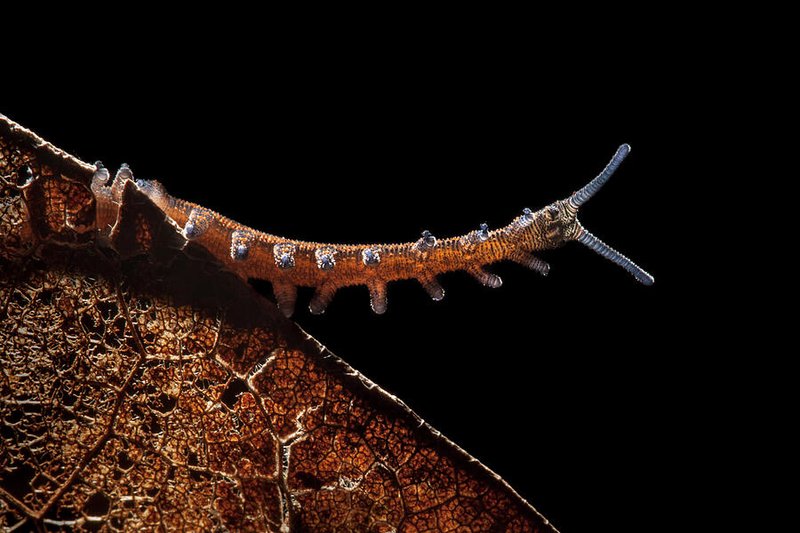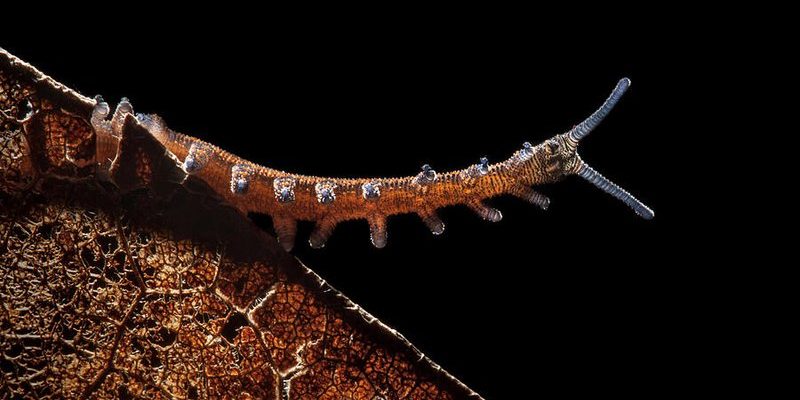
Velvet worms belong to a group called Onychophora, and they’ve been around for over 500 million years. That’s more than the dinosaurs! They’re often studied by scientists eager to understand more about our planet’s evolutionary history. So, let’s dive deep into the world of these extraordinary creatures, exploring what makes them a living fossil and why they matter in the grand scheme of evolution.
Understanding Velvet Worms
At first glance, you might mistake a velvet worm for a simple insect, but they’re much more complex and unique. They have long, segmented bodies covered in a soft, velvety texture, hence the name. Most species are about 4-10 centimeters long and come in various colors, including greens, blues, and browns.
You might be wondering how they fit into the animal kingdom. Velvet worms are more closely related to arthropods (like insects, spiders, and crustaceans) than to worms. This relation helps scientists understand how different species evolved from common ancestors. They live in moist, dark environments like rainforests, where they thrive and hunt their prey during the night.
Evolutionary Significance of Velvet Worms
Velvet worms have been around since the Cambrian period, which gives them an incredible evolutionary background. They represent a crucial link in the chain of life, showcasing traits that tell us about earlier forms of life on Earth. Think of them as living fossils, preserving characteristics found in ancient organisms.
One of the most fascinating aspects is their mode of locomotion. Unlike insects with hard exoskeletons, velvet worms have a soft body that moves in a unique, caterpillar-like way. They can glide over surfaces and navigate through leaf litter with ease. This flexibility and agility are remnants of an age when everything was much simpler—and softer.
Furthermore, they possess a unique feature called “slime glands.” When threatened, velvet worms shoot a sticky substance at predators, effectively immobilizing them. This hunting method shows an evolutionary adaptation that has enabled them to survive in their habitats for millions of years.
Physical Features and Adaptations
Let’s get into the nitty-gritty of what makes velvet worms so special. Their bodies are composed of a series of segments, each with a pair of stubby legs. These legs give them a unique gait, which you might find strangely adorable.
You might also notice that their skin is moist and slippery. This isn’t just for show; it helps them retain water in the damp environments they love. Think of it as nature’s way of equipping them for life in the shadows of a rainforest.
Another striking feature is their eyes—or lack thereof. While many might expect insects to have large, compound eyes, velvet worms have simple eyes that can only detect light and dark. Instead of relying on sight, these creatures use their other senses, like touch and taste, to navigate their world. Perfect adaptations for their dark, low-light habitats!
The Role of Velvet Worms in Their Ecosystem
So, why should we care about velvet worms? Their roles in the ecosystem are crucial! As predators, they help control populations of various smaller invertebrates. In turn, they become prey for larger animals, making them integral to the food web.
By consuming other small creatures, velvet worms keep the ecosystem balanced. You can think of them as the unsung heroes of the forest floor. Plus, their unique hunting technique—where they discharge a sticky slime—adds to the diversity of predatory strategies in nature, showing how various organisms adapt differently to survive.
Moreover, their existence provides insights for scientists studying evolutionary biology. They help illustrate how some traits persist over millions of years while others evolve, deepening our understanding of biological history.
Conservation and Threats to Velvet Worms
Unfortunately, velvet worms face threats like habitat destruction and climate change. As rainforests are cut down for agriculture and urban development, these creatures lose their homes. Preserving their habitats is vital for keeping velvet worms and many other species safe.
Interestingly, scientists are working hard to study and protect these unique animals. By understanding their behaviors and habitats, conservationists aim to create strategies to help them thrive. Just as we protect endangered species like pandas and tigers, these “living fossils” deserve our attention and care too.
You might think, “But they’re just worms!” Here’s the thing: every species plays a part in the larger puzzle of biodiversity. Protecting velvet worms means protecting the health of ecosystems as a whole.
How Velvet Worms Compare to Other Ancient Creatures
When you look at velvet worms alongside other ancient creatures, you’ll notice some fascinating differences. For example, many might think of trilobites when discussing ancient life forms. While both groups are ancient, trilobites went extinct millions of years ago, whereas velvet worms are still around.
This comparison is important for understanding survival. While creatures like dinosaurs evolved into birds, velvet worms maintained their unique characteristics, surviving in a world that changed dramatically around them. They remind us that evolution can take many paths, some leading to extinction while others create living links to the past.
If you think about it, this resilience is a lesson in adaptability. It shows how life can persist under various conditions and the importance of diverse survival strategies in nature.
In the grand tapestry of evolution, velvet worms are like vibrant threads that connect past, present, and future. Their unique adaptations and ancient lineage help us appreciate the complex history of life on Earth.
By studying these captivating creatures, we gain insights into how life evolves and adapts to changing environments. Ultimately, protecting velvet worms—and the ecosystems they inhabit—helps preserve a piece of our planet’s history.
So next time you hear about velvet worms, remember that they are not just “cute little creatures” but vital players in the story of life. They remind us that evolution is ongoing and that every living thing has a role to play in this beautiful world we share.

